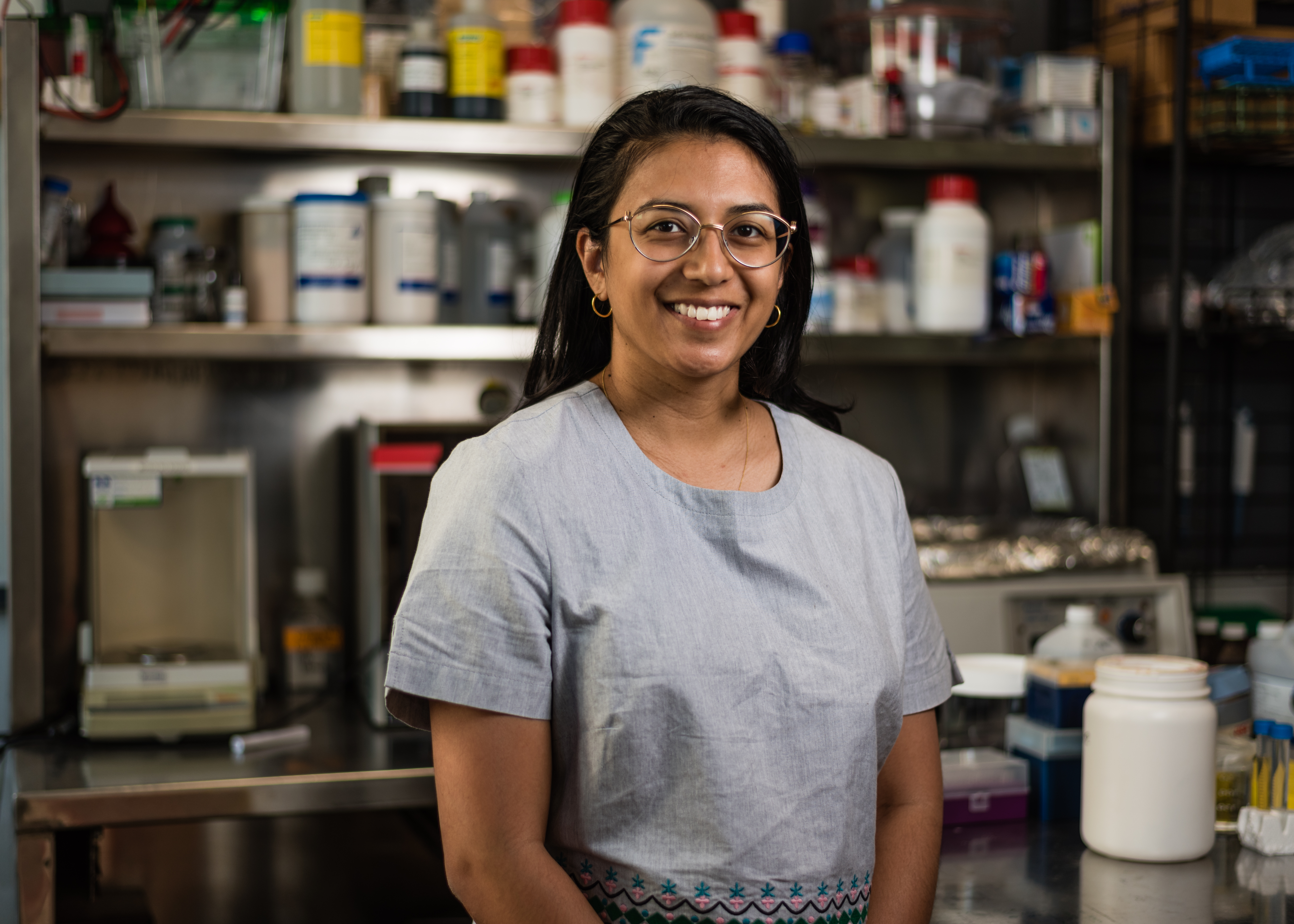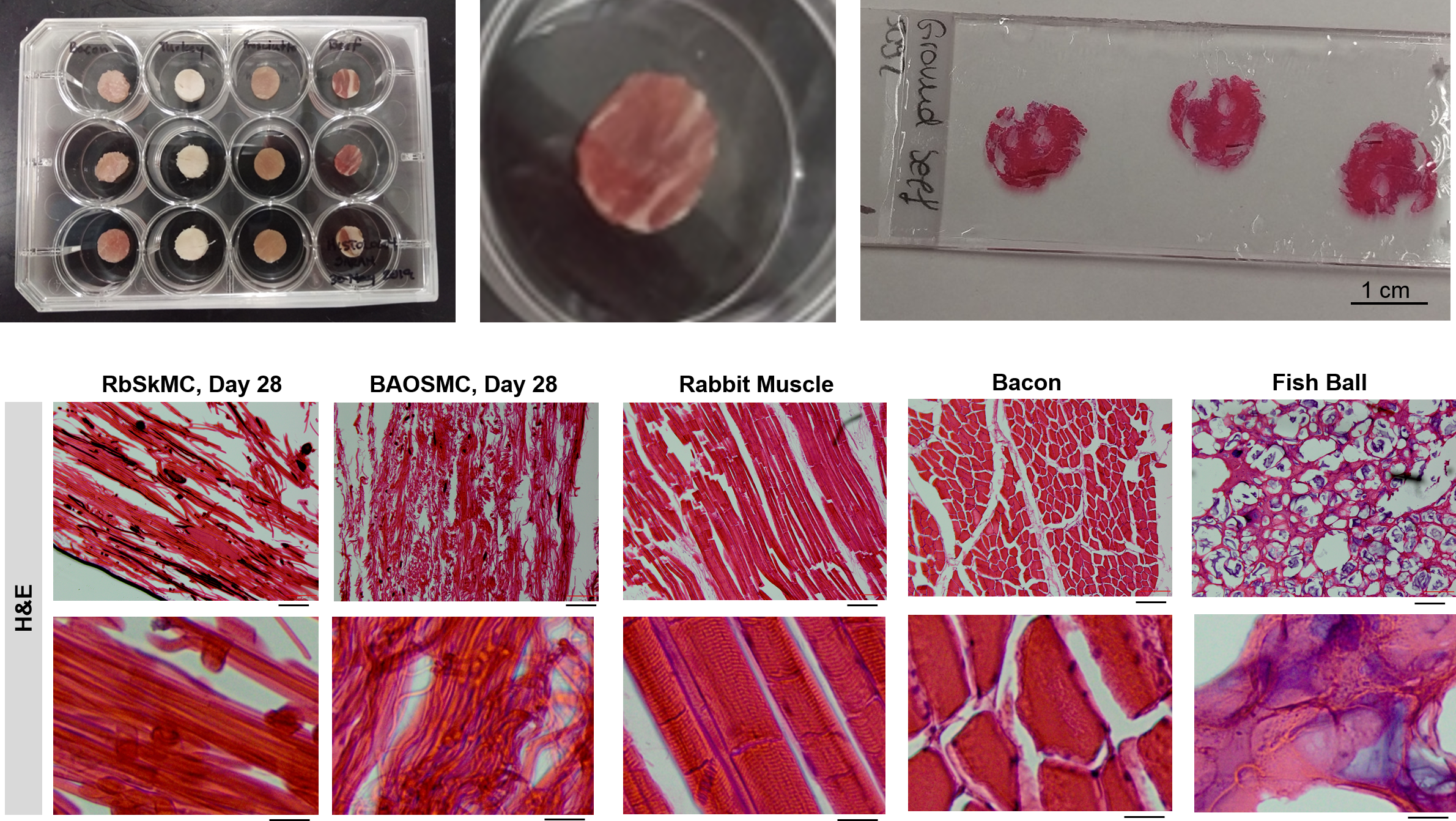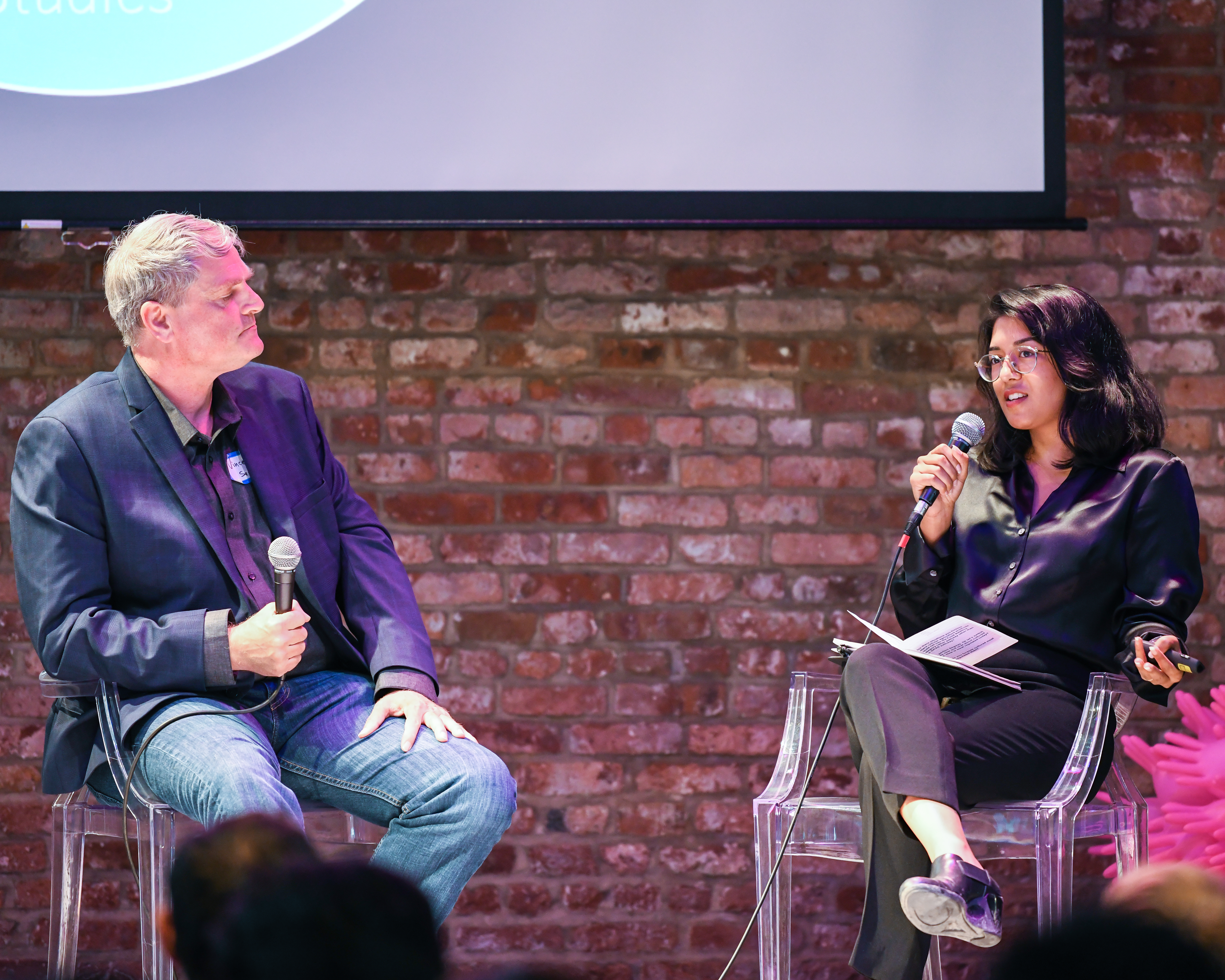
New Harvest
How an undergraduate paper helped launch the cultured meat industry
Inside Isha Datar's 10-year push to make meat without animals a reality
Ten years ago, cultured meat seemed like the stuff of science fiction. The idea of growing meat outside an animal’s body existed only in the minds of a few niche visionaries scattered around the world. There were no labs dedicated to developing it and no funding streams to support such research. People interested in cultured meat (not to be confused with plant-based meat) found each other by chance, through internet searches and word of mouth. Now, a decade later, those first imaginative ventures have exploded into a booming real-world industry, complete with a conference circuit and a Washington-facing industry coalition. What accounts for this rapid transformation?
One of the key turning points may have initially seemed as niche as the scattered debates that preceded it. In 2010, Isha Datar, a recent graduate of the University of Alberta, published a review paper in the scientific journal Innovative Food Science and Emerging Technologies, with her advisor Mirko Betti, a professor of agricultural and environmental science. Her paper would prove to be seminal. It surveyed all existing information about cell-cultured meat, synthesizing discoveries from tissue engineering and placing them in the context of food production. Datar took this daunting concept out of the realm of theory and distilled it into four approachable building blocks: cells, scaffolds, bioreactors, and media. It was the first time that all that knowledge had been assembled in one place.

Isha Datar in the lab.
New Harvest
More importantly, perhaps, Datar’s paper provided a touchstone for everyone interested in advancing the field. Its publication in a respected food science journal introduced the concept of cultured meat to a food science audience. This helped validate the incipient field of cellular agriculture, which was still struggling to establish itself as something worthy of serious scientific inquiry and pursuit. Datar became a major voice in the cultured meat movement, which has since landed in the public spotlight thanks to a few recent high-profile tastings.
“I’m motivated by the kind of big ideas that address significant challenges and change the way we do things,” says Datar, who is now executive director of New Harvest, a non-profit organization established in 2004 to promote the creation of animal products sans animals. “My vision is a world where cultured meat is on shelves, and decreases the demand for meat from animals. That would have a net positive effect on the planet.”
A Long Time Coming
The idea of producing meat in a lab is not new. In 1931, Winston Churchill, for example, wrote that the “absurdity” of raising a whole chicken just to eat its breast or wing could soon be avoided by “growing these parts separately under a suitable medium.” However, by the mid-aughts, when Datar was an undergraduate, astonishingly few researchers had seriously pursued this possibility or even thought about it.
A biology major in search of a calling, Datar signed up for Betti’s meat science class, where she learned about the environmental impact of the meat industry. A brief mention of cellular agriculture was enough to pique the undergrad’s interest, and she decided to focus on the topic for her senior thesis. She surveyed the existing literature on tissue engineering and culture techniques to see how those tools could be applied to food production, and then presented her findings in neat methodological steps. This, it turned out, would be a roadmap for the future of cultured meat production, including possible obstacles.

Because cells can only grow about 0.5mm thick in culture, it is easier to grow ground meat than something thick like a steak. Muscle cells could be grown on beads, which offer a lot of surface area, in a bioreactor, and when the muscle cells are removed, it will already have the consistency of hamburger.
New Harvest
Her research eventually led her to New Harvest and its founder Jason Matheny, whose groundbreaking paper “In Vitro-Cultured Meat Production” had been foundational to the very concept of cultured meat. At the time, the company’s website was just a landing page linking to a few articles about Matheny, who had become interested in artificial meat while touring Indian poultry farms as part of his graduate research in public health. Datar emailed her thesis to him, and he responded enthusiastically, cc’ing a number of other interested researchers. The scientists encouraged Datar to publish her findings, and she followed their advice, soon bringing in Betti as co-author.
“It is definitely not common for an undergraduate student to publish a manuscript in an internationally-recognized scientific journal,” Betti says now. “Most importantly, the paper critically addressed the engineering and nutritional challenges to producing meat that’s as similar as possible to real meat."

Isha Datar outside the office.
New Harvest
Others in the field quickly took notice, including Luke MacQueen, a research associate at Harvard University who specializes in tissue engineering and lab-grown meat. “This paper was among the first ten that ever discussed this subject at all, so it was pioneering, by definition,” MacQueen says. “Anyone who was in the field at the time was often misunderstood or dismissed a little bit, so Isha’s paper was really encouraging. It gave hope to people, and it cleared the path for others to follow.”
The support Datar received from the cellular agriculture community convinced her to keep working in the field. “It seemed so exciting to start my career focusing on something very few people were interested in,” she says. “I liked the idea of being on the cutting edge of this crazy idea with a few other quirky people. I felt very at home in that space.”
In 2013, after completing a master’s degree in biotechnology from the University of Toronto, Datar became New Harvest’s executive director. She has since led the non-profit’s efforts to build a community around cellular agriculture, funding promising research and bringing like minded scientists together at an annual conference. “Academia is where innovation really begins, and where real exploratory discovery starts,” she says.
New Harvest is one of the few sources of funding for such projects. Cellular agriculture is still considered a sort of in-between discipline, Datar says. It’s not traditional agriculture or classic food science, and it’s not typical health-focused biomedical engineering, making it ineligible for government grants from the likes of the US Department of Agriculture or the National Institute of Health. “I know firsthand that funding for projects like this used to be next to impossible,” MacQueen says. “I struggled myself, and I’m not the only one.”
Toward sustainable eating habits
There is a real urgency to get cultured meat on shelves, thanks to the devastating impact the meat industry is inflicting on the planet, and the growing demand for its products. Most people in the world still choose to eat meat on a regular basis, if they can afford it. Meat consumption has increased exponentially over the past 50 years. As the world’s population has doubled and countries have grown more prosperous, livestock production has quadrupled. Factory farming, meanwhile, has continued to lower costs and made meat more affordable than ever. Today, the average person consumes 95 pounds of meat per year, though some countries consume much more than others. Americans are among the most voracious carnivores, averaging over 222 pounds of meat per person, annually.
As production ramps up to meet this demand, so, too, does the industry’s carbon footprint. Livestock currently account for 14.5 to 18 percent of global greenhouse gas emissions. The industry also contributes to global warming indirectly, through the land it takes up. Around 80 percent of the world’s farmland is used to raise animals, and all that land provides just 18 percent of the calories consumed globally from farmed food. Compounding the matter, land allocated to livestock is oftentimes clear-cut forest, which otherwise could be conserved or restored to serve as a vital natural carbon sink—a key to mitigating global warming.

New Harvest is advancing the science behind producing animal products without animals. For example, egg white proteins made by bioreactors instead of laying hens in battery cages.
New Harvest
What’s more, the meat industry’s footprint is growing at a deleterious rate. Only last month, researchers from Harvard University published a paper warning that the livestock sector alone will account for nearly half of global emissions by 2030, if current growth and operational trends persist. The study’s authors have called for countries to set near-future dates for hitting “peak meat” production, and to start scaling back from there. Scaling back, the researchers write, could mean replacing livestock with crops, or taking a more environmentally friendly agroforestry approach to raising animals.
Cellular agriculture could be a significant part of that solution, if a few things align. To make the product viable and competitive, the costs of production need to be even further reduced. In order to accomplish that, the industry requires more public funding and investment. Time is of the essence, because climate change won’t wait.
A Support Network
There are reasons to be optimistic. Over the past 10 years, thanks to New Harvest’s support, cultured meat has made huge strides. Advances in stem cell technology have inspired a further breakthrough in the field, allowing researchers to reprogram cells into distinct forms, including muscle cells.
MacQueen and his colleagues at Harvard can already produce small pieces of tissue that resemble meat. They are now working on techniques to introduce textures that lend their meat a natural mouthfeel. Another 30 or so start-up companies are also working to produce their own cultured meat or dairy products. “The technology is finally becoming practical,” MacQueen says. “The extraordinary is becoming ordinary.”

Contrasting the cellular structure of cultured meat and animal meat.
Luke Macqueen
Datar’s contribution has long outgrown her famous undergraduate paper, which helped kick off so many careers in the field, including her own. She is driven by a desire to create space for scientific advancement through the joint efforts of many people, institutions and companies. “This is a huge project,” she says. “It’s about community building.”

Isha Datar talking to Vince Sewalt at New Harvest's 2017 conference.
New Harvest
If successful, cultured meat will help solve a multitude of problems. It will help lessen the amount of needless animal suffering. It will reduce greenhouse gas emissions by displacing a portion of the traditional meat industry, and it could help reduce food insecurity—a looming threat in the face of climate change. It also has the potential to ward off antibiotic resistance, a major growing problem in livestock production. Breakthroughs in the industry’s tissue engineering research could potentially funnel back to the medical field as well.
These are the possibilities that drive Datar to double down on her mission to fund more academic research. She is passionate about training students who are just as curious and talented as she was as an undergrad, and to bringing their talent into this potentially transformative industry—just as others welcomed and encouraged her.
“It feels like a win-win-win solution,” Datar says. “So much positivity comes from this kind of innovation. I’m excited to be part of such a long game.”
This article was sponsored by New Harvest, a 501(c)(3) nonprofit accelerating breakthroughs in cellular agriculture by supporting public cultured meat research. Sign up for their newsletter to stay in the loop about cultured meat updates and events.

